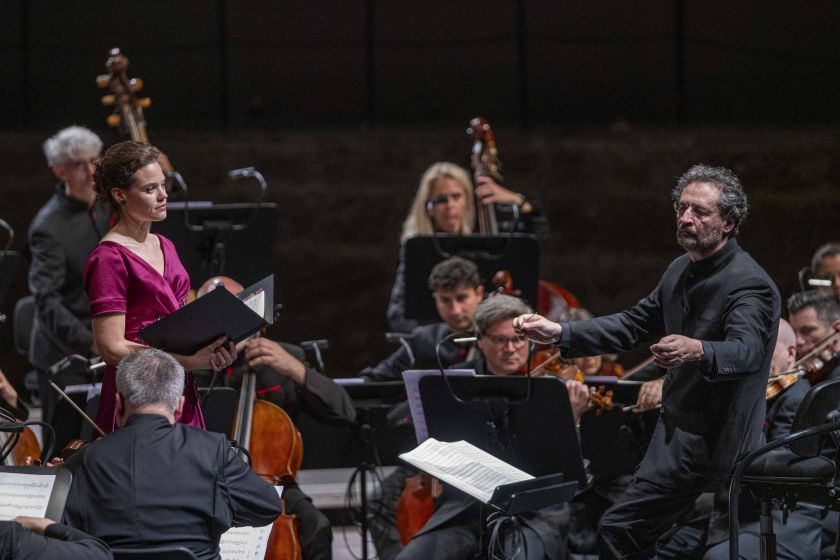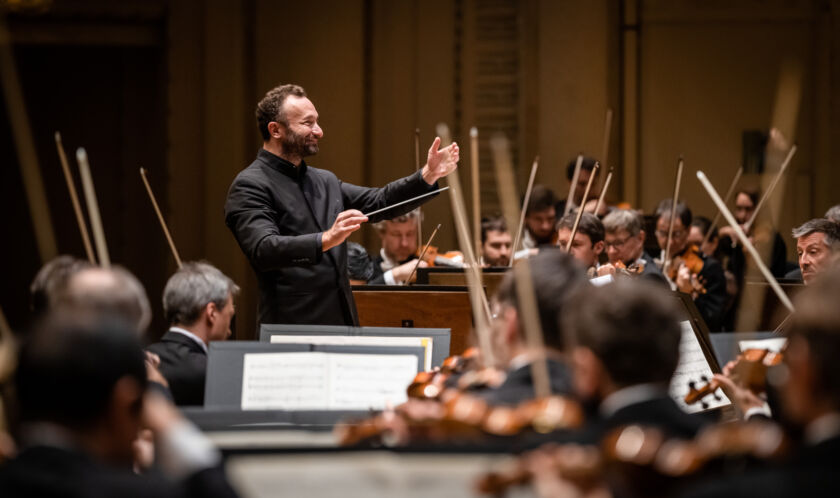Guest Orchestras
A kaleidoscope of harmony: the international orchestras featured during this year’s summer Festival


In Latin, concertare has several meanings: they include arguing, competing, even fighting. In a concerto, thus, various parties compete, for example a soloist and an orchestra. However, the meaning is not necessarily competitive only, as one may also turn to the Italian concertare for inspiration: this term has been used in the musical context since 1519, and it indicates the opposite of its Latin ancestor – namely, to coordinate instruments playing together, harmonizing and therefore forming an ensemble.
As always, the concert programme of the Salzburg Festival contains both elements. If you wish, you may consider it a competition between some of the world’s most famous orchestras. Others may take more delight in the harmonic and delicate way in which the different musical approaches and stylistic variations, ranging from the 18th to the 20th centuries, commingle in exemplary diversity. Using historical instruments and employing the documented practices of the period in question, Il Canto di Orfeo collaborates with Les Musiciens du Prince – Monaco under the baton of Gianluca Capuano, performing Mozart’s Mass in C minor (6/7 Aug.), and Jordi Savall and his historically-informed ensemble Le Concert des Nations bring the stirring, even shocking elements of Franz Schubert’s “Unfinished” and his “Great” Symphony in C major to the fore (1 Aug.).

At the other end of the scale are those ensembles dedicated to the living present. Under the baton of its honorary member Sylvain Cambreling, Klangforum Wien, for example, traces the developments leading from Maurice Ravel and Edgard Varèse to Pierre Boulez (1925-2016), celebrating the latter’s anniversary (23 Aug.). The ensemble Le Balcon, named for Jean Genet’s eponymous play, and its director and co-founder Maxime Pascal, place Boulez in the context of his fellow composers Karlheinz Stockhausen and Luigi Nono. Live electronics form the youngest “instrument” in this context (19 Aug.).
Within this arc, the classic combination of solo concerto and symphony is always good for stimulating dialogues. Lang Lang, for example, champions Felix Mendelssohn’s rarely-performed Piano Concerto in G minor, which the West-Eastern Divan Orchestra under Daniel Barenboim follows with Beethoven’s “Eroica” (15 Aug.); the Gustav Mahler Youth Orchestra under Manfred Honeck achieves a similar effect with the sonic splendour and emotional eruptions of Erich Wolfgang Korngold’s Violin Concerto (soloist: Renaud Capuçon) and Piotr Tchaikovsky’s Fifth Symphony (23 Aug.). Alexander Melnikov is the soloist in Dmitri Shostakovich’s youthful, carefree Piano Concerto No. 2, which the composer dedicated to his son Maxim on his 19th birthday, and Teodor Currentzis and Utopia juxtapose this piano concerto with the childishly wise naiveté of Mahler’s Fourth Symphony (soprano soloist: Regula Mühlemann, 18 Aug.). Here as in Mahler’s Ninth (played by the Berlin Philharmonic under Kirill Petrenko, 31 Aug.), all the competitive forces implied by the term “concerto” fade away, allowing us to glimpse an otherworldly form of harmony.
Walter Weidringer
First published in the Festival insert of Salzburger Nachrichten
